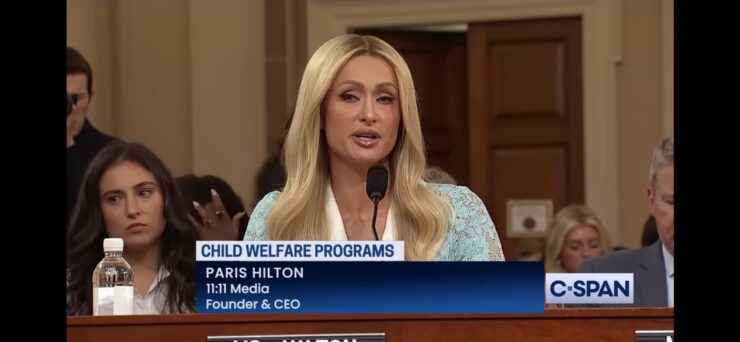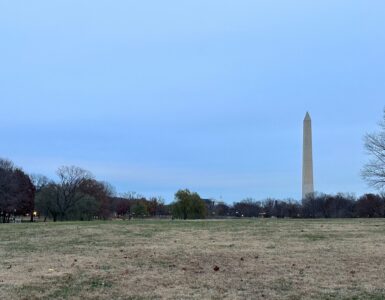This year has been turbulent for wilderness therapy programs, with claims of abuse conflicting with their mission to help struggling teens and adults.
Three headline-making documentaries—Netflix’s “Hell Camp: Teen Nightmare” and “The Program,” and Max’s “Teen Torture, Inc. all released within the past 12 months—have highlighted troubling accounts of mistreatment and operational failures. On June 6, Paris Hilton testified before the House Ways and Means Committee, sharing her own experience at a program featured in the Netflix films.
Meanwhile, advocates for wilderness therapy marked a milestone: the 25th anniversary of the National Association of Therapeutic Schools and Programs (NATSAP). The Bowie, Maryland-based organization champions these wilderness programs as alternatives for fostering resilience and emotional growth, even as it acknowledges the need for reform.
Advocates, including NATSAP, cite decades of research showing long-term mental health and behavioral benefits.
“We’ve got studies and research from around the globe, not just within the field, that continue to point to just how effective this form of treatment is now,” Derek Daly, the incoming president of the NATSAP board of directors and co-founder of Legacy Treatment Center and Juniper County Recovery.
 This collision of perspectives has placed the industry at a tipping point with its future dependent on whether it can address its flaws while preserving its promise.
This collision of perspectives has placed the industry at a tipping point with its future dependent on whether it can address its flaws while preserving its promise.
Wilderness therapy programs take a unique approach: participants are removed from their daily environments and placed in remote wilderness settings, where they engage in challenging activities like hiking and camping alongside group therapy and therapeutic interventions. Advocates said that the combination of physical rigor and therapeutic support creates a catalyst for growth.
Nazurana Limaye, who spent 112 days in Trails Carolina at age 17, said her experience was transformative.
“It wasn’t just about my own mental health—it helped me reconnect with my parents,” she said, adding that the program improved her ability to communicate her feelings and emotions. Limaye said the outdoor setting and group dynamics provided a unique space for self-reflection and growth.
Laura Mills, an independent researcher for the NATSAP, points to decades of evidence supporting wilderness therapy.
“Dozens of articles in peer-reviewed journals highlight the mental, behavioral, and relationship benefits of wilderness therapy,” she said.
Mills said many programs promote evidence-based techniques such as cognitive behavioral therapy and measure outcomes for up to two years post-treatment.
Daly said that wilderness therapy programs have a safety record that far exceeds many inpatient facilities, with only four reported deaths in accredited programs over two decades compared to thousands in hospital settings.
However, critics say these successes do not tell the whole story. The industry is largely unregulated, with significant variation in the quality of care and oversight across programs.
Hilton’s testimony about the abuse she says she endured at a residential treatment center brought national attention to these programs’ darker side.
“When I was 16 years old, I was ripped from my bed in the middle of the night and transported across state lines to the first of four youth residential treatment facilities,” Hilton told the House Ways and Means Committee.
“These programs promised ‘healing, growth, and support,’ but instead did not allow me to speak, move freely, or even look out of a window for two years,” she added.
Cost is another barrier. With fees often exceeding $50,000, wilderness therapy remains inaccessible to most families.
“It’s largely been reserved for the wealthiest among us,” Daly said.
 For middle- and lower-income families, this often means resorting to other mental health options, which may be less effective or unavailable.
For middle- and lower-income families, this often means resorting to other mental health options, which may be less effective or unavailable.
Limaye said the industry needs careful reform rather than outright condemnation. “Each program should be reviewed individually,” she said.
“Not all wilderness therapy programs are bad or harmful.” Mills agreed, stressing the importance of listening to all experiences—both positive and negative—to improve the industry.
“We don’t want to repeat the past if it wasn’t helpful,” Mills said.















If these facilities are so great, surely they would be pushing for regulation? It’s a Wild West, and there are so many terrible teen “treatment” facilities, I would imagine anyone who genuinely cared about child welfare would understand the need for regulation. If I worked in as dubious an industry, I’d really want to demonstrate that I was committed to fighting for improvements and ethical practices.
It seems that the directors of these facilities are more interested in keeping the gravy train running than helping kids though.
For example, the Joint Commission only investigated reports for incidents that happened in the LAST YEAR. If you are in one of these facilities, how are you going to report your abuse? They can take your phone away, they can drug you, they can assign behavioral consequences for speaking up… surely anyone would recognize the obvious opportunities for bad actors? Access to “troubled” teenagers that aren’t going to believed if they are sexually assaulted by a staff member – and there aren’t any requirements for the qualifications of the “behavior” techs.
Accountability is crucial, but it’s simply false to claim that professionals in this field aren’t pushing for regulation. Advocates within mental health have already driven significant progress—raising standards, shutting down unethical programs, and implementing reforms that protect vulnerable populations. Just look at the healthcare landscape 20 years ago compared to today. The changes we now take for granted exist because of front-line heroes who were fighting for accountability long before documentaries highlighted these issues.
To villainize these advocates now, rather than celebrate their hard-won successes and support their ongoing work, doesn’t bring us closer to solutions—it moves us further away. Many of the strongest voices for reform and accountability have always come from within the field itself, led by people who genuinely care about child welfare. Ignoring or discrediting their efforts undermines the very progress we all want to see. If we’re serious about real solutions, let’s recognize and support the advocates who are already making them happen.